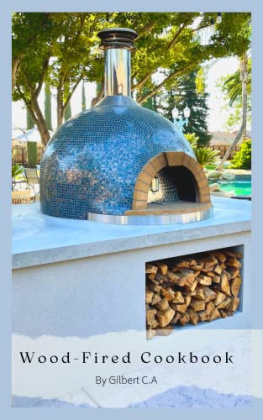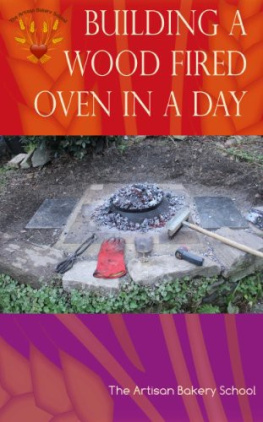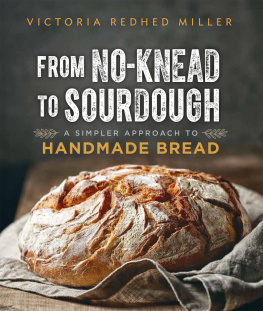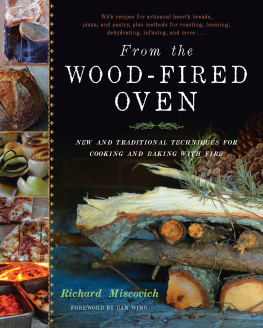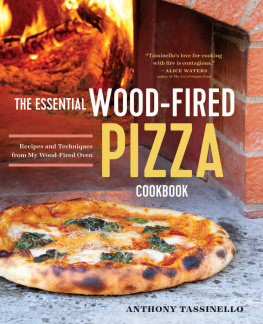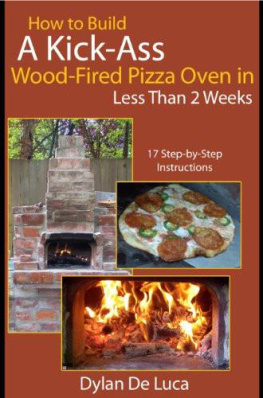thank you for all that you taught me, including that such a thing as a wood-fired oven existed
Things didnt really change much over thousands of years, except for the gradual and comparatively recent move toward containing the fire and being able to control its heat. Ancient Egyptians, Greeks, and Romans all used some type of brick or stone oven, the direct antecedent of todays wood-fired ovens. From the early cast-iron stoves heated by wood fire in the 1700s, the home oven progressed to coal and kerosene (early nineteenth century), gas and electric ovens (early twentieth century), and microwave ovens (mid-twentieth century). And now, with the reemergence of the wood-fired oven, we have come full circle, doubling back on our ancient ancestors. It seems the more digital and abstract we become, the greater our appreciation is for a primitive and primal counterweight. Interestingly, cooking in a wood-fired oven today remains as unpredictable and idiosyncratic as it was a thousand years ago, nothing at all like the precision and consistency we strive for when cooking in any of todays conventional ovens.
Before you get started, be forewarned: theres a fair amount of theater that goes naturally with cooking in a wood-fired oven, even when youre cooking by yourself. If you arent cooking by yourself, be sure to provide seating for your guests, not only for their comfort but also to keep them out of your way during the heat of the battle. Folks are drawn to a live fire and will be interested in being part of the process. Without meaning to sound unfriendly, being prepared for this social aspect of wood-fired cooking will help keep you from being derailed by conversation and well-intentioned meddling.
TYPES OF WOOD-FIRED OVENS
Recent years have seen the proliferation of all types of wood-fired ovens, from $149 so-called pizza ovens, some of which rest on a countertop and others of which stand on legs, to large custom-built masonry ovens that can cost $25,000 and up. Despite their many differences, commercially available wood-fired ovens can be broken down into two categories: black fire and white fire. Black fire ovens are those in which the fire is in the same chamber as the food, while the fire in white fire ovens is in a separate chamber below the cooking chamber, leaving the latter relatively smoke- and ash-free.
Given their intrinsic idiosyncrasies, its difficult to make hard-and-fast distinctions between these two types of wood-fired ovens, but for the sake of simplicity, here are a few broad statements that generally hold true:
White fire ovens generally do not achieve the very hot temperatures (in excess of 600F, or 315C) associated with black fire ovens. Because its more difficult to build up residual heat in a white fire oven, its also more difficult to create conditions where the interior heat of the oven is both relatively hot and sustained over a long period of timeconditions needed, for example, to bake successive loaves of bread. Also, without the presence of a live fire in the cooking chamber, it is more difficult to achieve a crispy exterior on the foods you are cooking. That said, owners of white fire ovens love their ease of use, the speed with which they can be fired up and used for cooking, and their relative cleanliness (no ashes, etcetera, to sweep out of the cooking chamber).
Black fire ovens are the more traditional of the two types of ovens and, frankly, are trickier to use. Black fire ovens heat up and retain their heat differently than white fire ovens. A white fire oven is a little more like a conventional gas or electric oven in that the heat source comes from below and heats the floor of the oven and the interior (the air) space relatively evenly. With a black fire oven, the fire not only heats the air, but it also heats the floor and the ceiling, both of which radiate heat to the food being cooked. If you want your black fire oven to produce relatively even heat over a long period of time, it will need to be heated for several hours, allowing the thermal mass of the ovens floor, walls, and ceiling to thoroughly absorb the heat.
When you first start a fire in a black fire oven, black soot will appear on the inside of the ovens roof. As the oven heats, the soot will turn white and disappear. Once the roof has returned to its original non-soot-covered surfaceusually after about an hourthe oven is ready for use. And just for the record, as a general rule, dont add wood to the fire while theres food in the oven. To avoid ash-covered food, if you need to add wood to the fire, remove the food from the oven, add the firewood, and then put the food back.
Unlike the white fire oven, with the fire below the oven floor, if you leave a live fire in the cooking chamber of a black fire oven, you can position the food up next to it to brown and crisp the exterior, revolving it as necessary to achieve an even effect. You can also rake the coals into an even bed and use whats come to be known as a Tuscan grill over the glowing embers for a grilled meal. Or, if youve thoroughly heated the thermal mass of your oven, you can rake out all remnants of the fire and bake enough bread to feed the entire neighborhood. In short, many avid home cooks like the versatility and authenticity of black fire ovens, even though they require somewhat more attention and dedication than white fire ovens.
Please note that the simplicity of the white fire ovens demands nothing more than starting and maintaining a fire in the fire chamber of the oven and adjusting the drafts to achieve the desired temperature of the cooking chamber. Because of this simplicity, and the rapidity with which you will learn to control your white fire oven, the cooking instructions for the recipes in this bookwith the exception of recommended cooking temperatures, which are the same for both types of ovenswill pertain solely to black fire ovens.
GENERAL GUIDELINES
The manufacturer of your wood-fired oven will, no doubt, provide you with detailed information regarding all aspects of heating and cooking in your specific oven. The heating of a white fire oven is a straightforward process of starting a fire under the cooking chamber and maintaining it until it has achieved the desired cooking temperature. Heating a black fire oven is a bit more involved. That said, here are a few rules important to remember for both black and white fire ovens:


